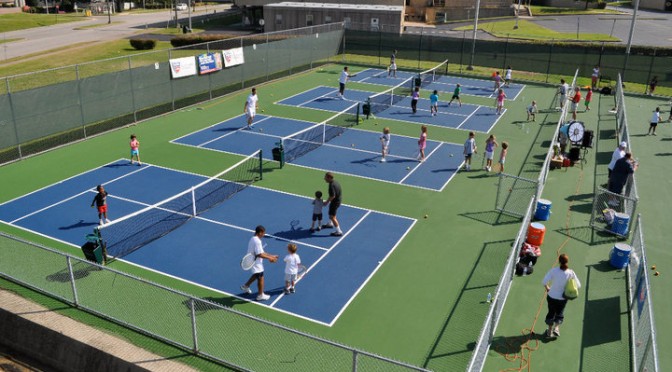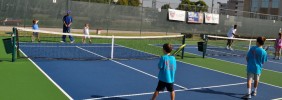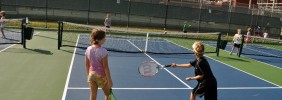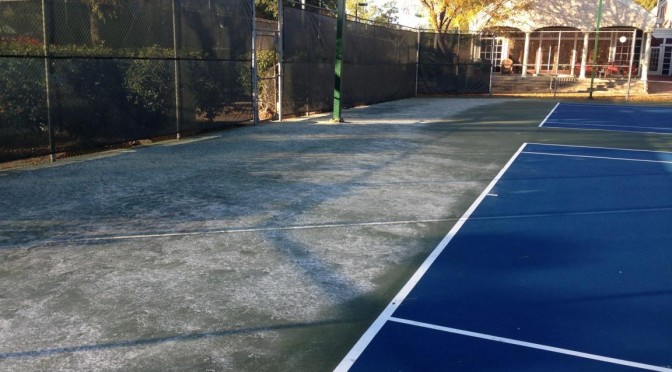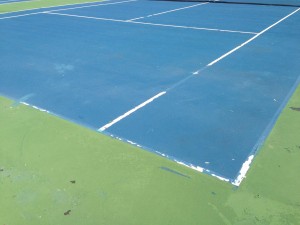The QuickStart (10 and under) tennis format, also known as Kids Tennis, is a program that the USTA is promoting to ensure the growth of tennis. Statistics show when kids learn a sport early in their lives, they are more likely to continue playing throughout their adult life. Kids tennis takes it one step further and reshapes the tennis court surface dimensions, racquet sizes, and tennis balls to better fit the size and abilities of kids. This makes is much easier for kids to begin learning their tennis techniques, and have fun doing it!
QuickStart/Kids Tennis has changed the following standards, to meet the needs of kids:
- Smaller Tennis Courts – Less area for kids to cover
- Specialized tennis balls with less compression for slower and lower bounce
- Smaller kid-friendly racquets for easier handling
- Modified scoring rules for age groups
Many clubs, parks, and schools have begun adding kids courts to their facilities. Some have installed permanent quickstart courts, but many have been adding blended lines so that players of all ages can use all of the courts. This makes the best use of space, and provides flexibility at a minimal cost. Blended lines for kids tennis, are normally painted with a shade of line paint that is lighter or darker, but of the same family as the tennis court surface. For example, if the inside court color is blue, the quickstart lines must be a darker or lighter shade of blue. The standard court lines are always white.
There are two different sizes, when it comes to quickstart courts. The 60 foot court length is for 9 and 10 year olds, and the 36 foot courts are for ages 8 and under. If you have a court that is designated for kids, you may also check with a surfacing manufacturer or contractor about resurfacing your court with a slower playing acrylic surface. This will slow the ball bounce down and give the kids more time to get to the ball and volley.
If you are interested in finding a qualified tennis court builder near you, fill out the contact form on this page and we will provide qualified contacts. We can recommend authorized installers near you that are trained in application and knowledgeable in standard tennis and quickstart tennis court layout.

